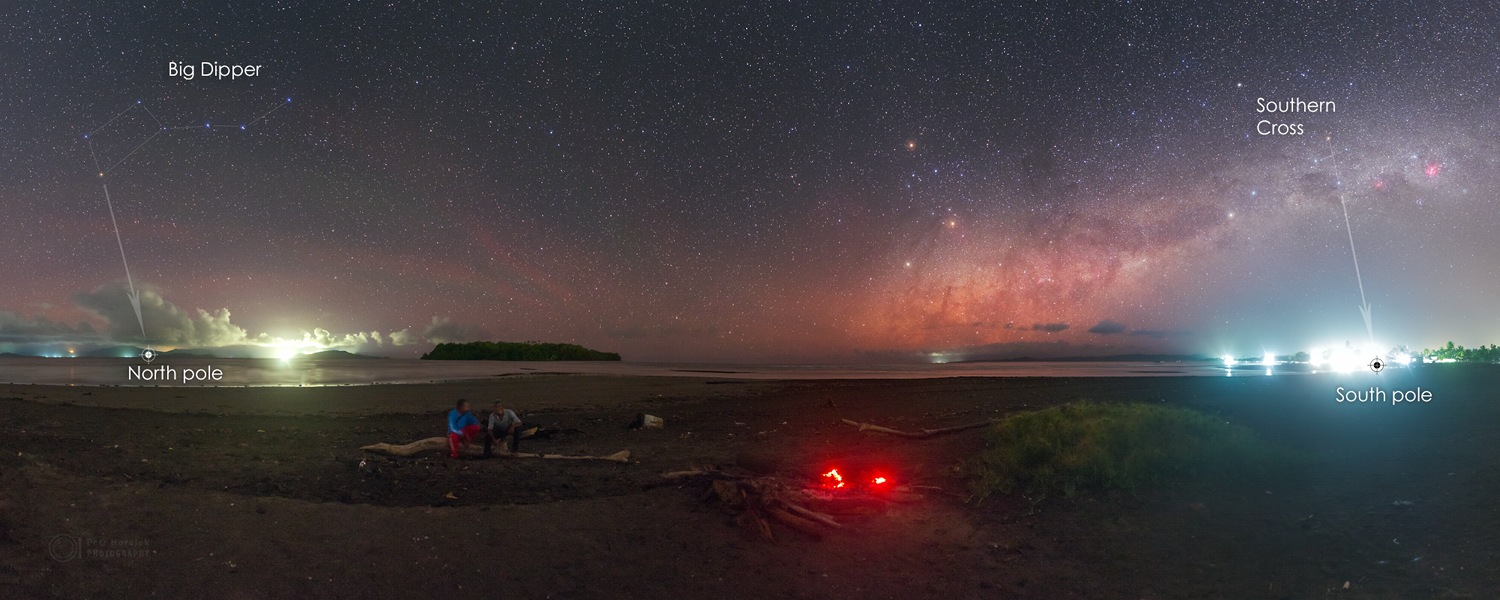Have you ever seen the North star, Polaris? It’s decently bright and very close to the North celestial pole. Lining up with the rotation axis of the Earth, the North celestial pole is the point in the sky that never moves, day or night. If you know how to find Polaris, it becomes easy to find the cardinal directions and navigate by the stars. And finding it simply requires finding the big dipper, a bright and easily recognizable object. The same rules apply in the southern hemisphere. But even though there is no southern star, there is another fantastic object in the South that can guide you to the South celestial pole, the Southern cross.

Both the Big Dipper and Southern Cross are called asterisms. These are shapes in the sky that are easy to recognize, but they are not considered constellations, though they are part of one or more constellations. For example, Orion’s belt is an asterism, since the three belt stars are an easy to recognize part of the constellation Orion. Some other asterisms you may have heard of include the Summer triangle and the Autumn square. The Big Dipper is part of the constellation Ursa Major (The great bear), and the Southern Cross is the four brightest stars in Crux (The Cross).
But the real power in the Big Dipper and Southern Cross is that they act as navigational tools. In the image above, you can see both of these asterisms in the sky. Because of where the image was taken, between the tropics of Cancer and Capricorn, both the North and South poles are visible at the same time, at the horizons.
Finding North involves using the Big Dipper to determine the direction and your hand to measure the distance. By looking at the two stars at the end of the ‘cup’ part, you can form a line moving out from the open end of the dipper. Measuring along this line, hold your thumb and pinky finger out at arm’s length to approximate the 25 degree distance to Polaris.


For wayfinding in the South, it is definitely more difficult, but still easy to get an approximate direction. You not only need to find the Southern Cross, but two other stars called the pointers. Draw two lines, one from the top star in the cross through the bottom one, and the other perpendicular to the line joining the pointers. By extending these two lines, the South celestial pole can be found where they intersect.
I have never been to the Southern hemisphere to see the night sky, but I am familiar with a lot of the bright stars, constellations, and other interesting objects that I might see. Part of the excitement will be to see familiar constellations flipped over.
Whenever I speak to kids about navigating in the sky, I have to make them pretend they don’t have technology. No cellphone, iPad, or other device with GPS. Navigating by the stars is less necessary now than ever, but there is still a lot of satisfaction for anyone able to figure it out the way our ancestors did, combining the natural world with a bit of know-how.

